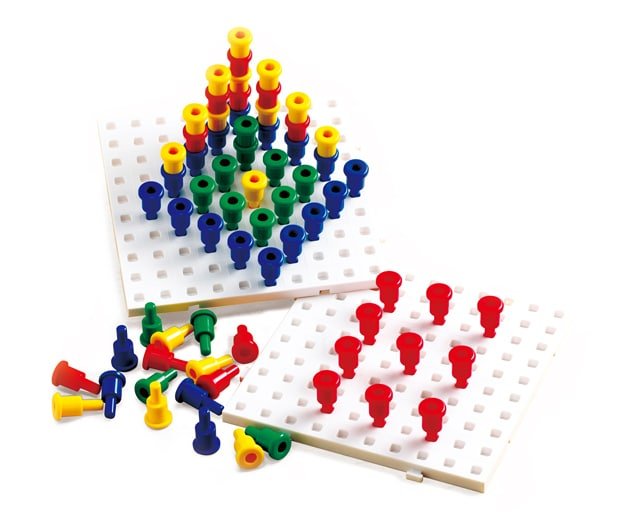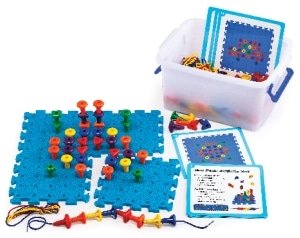• Number
• Algebra: Pattern
Pegboards are basically boards with holes drilled at regular intervals. Pegs are placed into the holes to support early counting and to form patterns. Generally the pegs come in different colours and allow for colourful patterns to be made. Altering the pegs to allow for pegs to stack on top of each other increases the type of patterns that may be made and increases the opportunity for creativity. Pegboards can become quite sophisticated. The X–Y Co-ordinate Pegboard allows pegs to be placed in a single quadrant or the 4 quadrants of the Cartesian plane. Pegs may be placed at various co-ordinates on the grid.
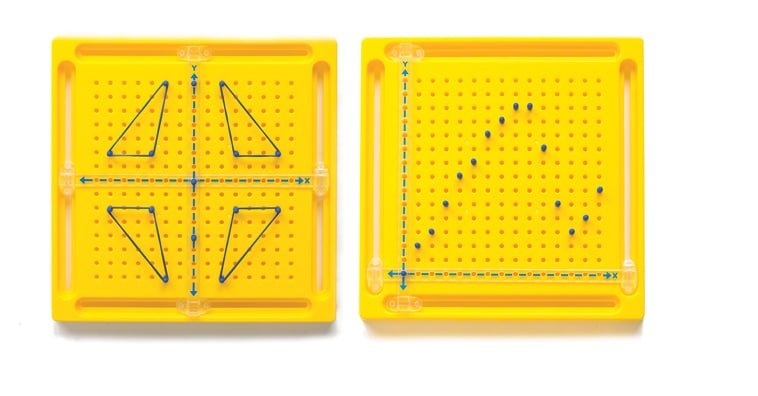
Mathematical Language



Mathematical Language
Counting, pattern, symmetry, shape
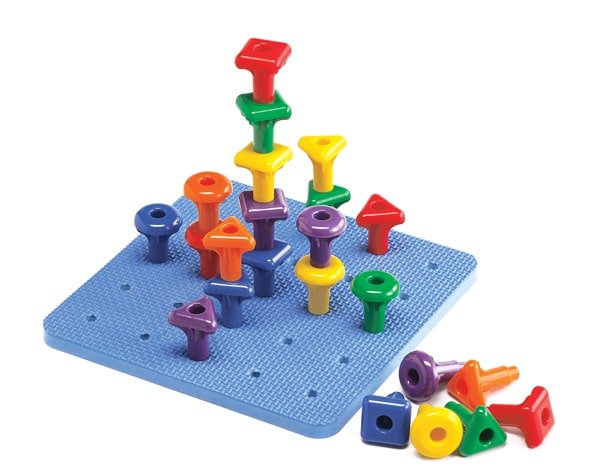
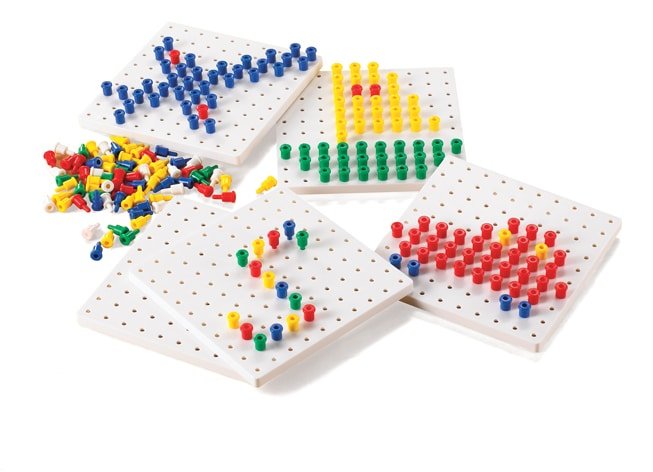
Using Pegboards
There are three basic ideas that young students have to master when using pegboards to pattern. They need to be able to identify patterns and then:
• Copy
• Continue
• Create
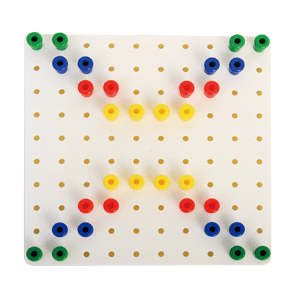

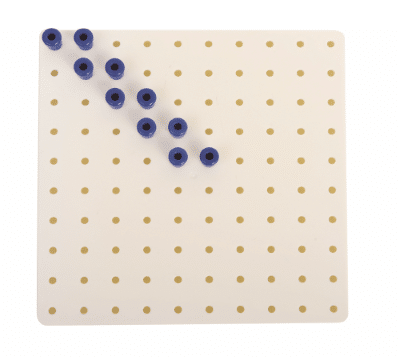
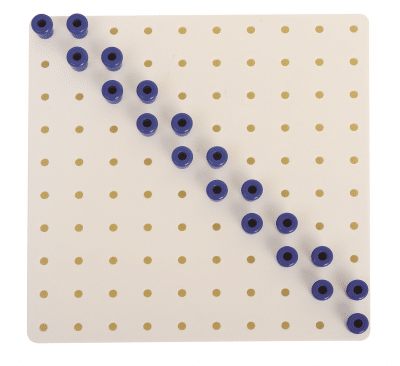

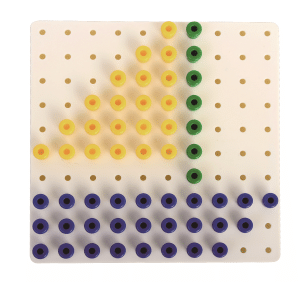
While creating patterns children will be learning about:
• Shape
• Symmetry
Typical Classroom Requirements
A class set:
Whole class activities may be carried out with one peg board shared between two students.
A typical class would require 16 pegboards. If pegboard activities are designed to be completed by small groups rotating between activities then 4 – 6 pegboards would be sufficient.
Support and Complementary Materials
These generally come in the form of activity cards or photograph cards that encourage students to:
• Copy
• Continue and
• Create patterns
